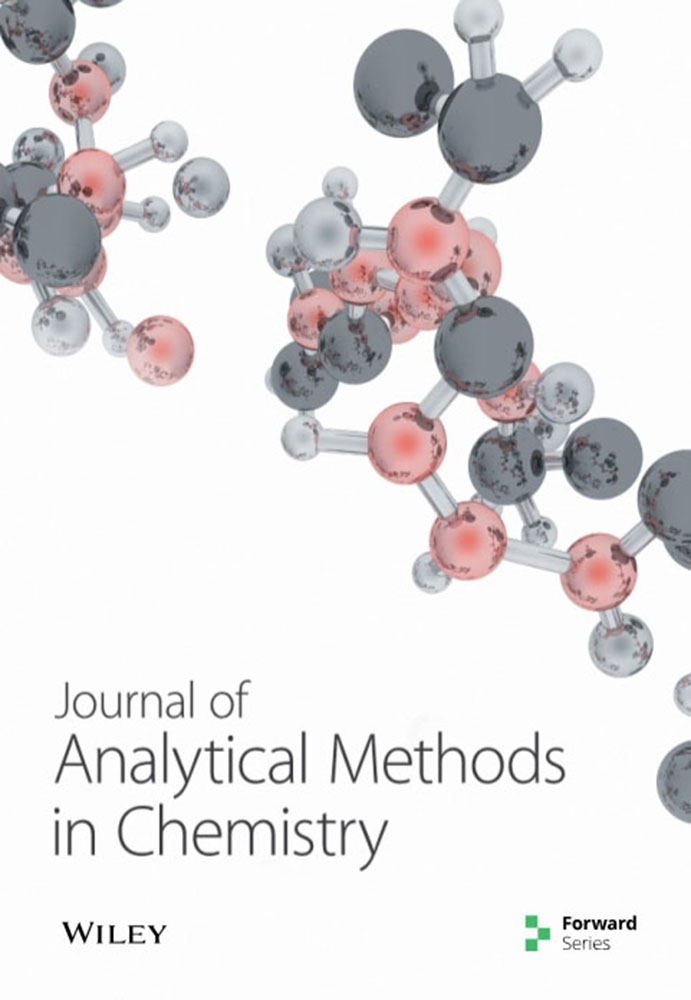未经修饰的丝网印刷碳电极电化学检测血清中肌醇含量
IF 2.3
3区 化学
Q3 CHEMISTRY, ANALYTICAL
引用次数: 0
摘要
简单、快速、准确地检测血液中肌醇(MI)浓度对诊断多囊卵巢综合征、神经系统疾病和癌症至关重要。首次建立了利用一次性未修饰丝网印刷碳电极(SPCE)定量人血清中心肌梗死的电化学检测方法。通过肌醇脱氢酶(IDH)和辅助因子β-烟酰胺腺嘌呤二核苷酸(NAD+)的反应产物间接检测心肌梗死。在5.0 μM ~ 500.0 μM浓度范围内获得良好的线性校准曲线(R2 = 0.9981),检测下限为1.0 μM,定量限为2.5 μM。加标浓度为90.3 ~ 106%,日内精密度相对标准差为3.2 ~ 6.2%,日内精密度相对标准差为7.1 ~ 9.0%。spce -电化学生物传感器简单、准确、无需修改,在临床样品血清心肌梗死的即时检测(POCT)中显示出巨大的潜力。本文章由计算机程序翻译,如有差异,请以英文原文为准。
Quantification of Myoinositol in Serum by Electrochemical Detection with an Unmodified Screen-Printed Carbon Electrode
Simple, rapid, and accurate detection of myoinositol (MI) concentration in blood is crucial in diagnosing polycystic ovary syndrome, neurological disorders, and cancer. A novel electrochemical detection (IED) method was established to quantify MI in human serum using a disposable unmodified screen-printed carbon electrode (SPCE) for the first time. MI was detected indirectly by the reaction product of myoinositol dehydrogenase (IDH) and cofactor β-nicotinamide adenine dinucleotide (NAD+). Good linear calibration curves were obtained at the concentration range from 5.0 μM to 500.0 μM (R2 = 0.9981) with the lower limits of detection (LOD) and quantification (LOQ) of 1.0 μM and 2.5 μM, respectively. Recoveries were calculated at three spiked concentrations, and the values were between 90.3 and 106%, with relative standard deviation values of 3.2–6.2% for intraday precision and 7.1–9.0% for interday precision. The SPCE-electrochemical biosensor is simple, accurate, and without modification, showing great potential for point-of-care testing (POCT) of serum MI in clinical samples.
求助全文
通过发布文献求助,成功后即可免费获取论文全文。
去求助
来源期刊

Journal of Analytical Methods in Chemistry
CHEMISTRY, ANALYTICAL-ENGINEERING, CIVIL
CiteScore
4.80
自引率
3.80%
发文量
79
审稿时长
6-12 weeks
期刊介绍:
Journal of Analytical Methods in Chemistry publishes papers reporting methods and instrumentation for chemical analysis, and their application to real-world problems. Articles may be either practical or theoretical.
Subject areas include (but are by no means limited to):
Separation
Spectroscopy
Mass spectrometry
Chromatography
Analytical Sample Preparation
Electrochemical analysis
Hyphenated techniques
Data processing
As well as original research, Journal of Analytical Methods in Chemistry also publishes focused review articles that examine the state of the art, identify emerging trends, and suggest future directions for developing fields.
 求助内容:
求助内容: 应助结果提醒方式:
应助结果提醒方式:


